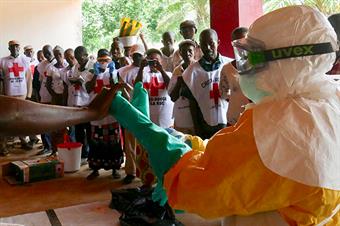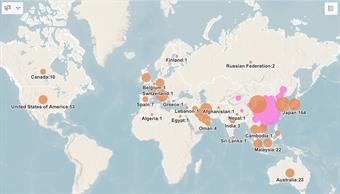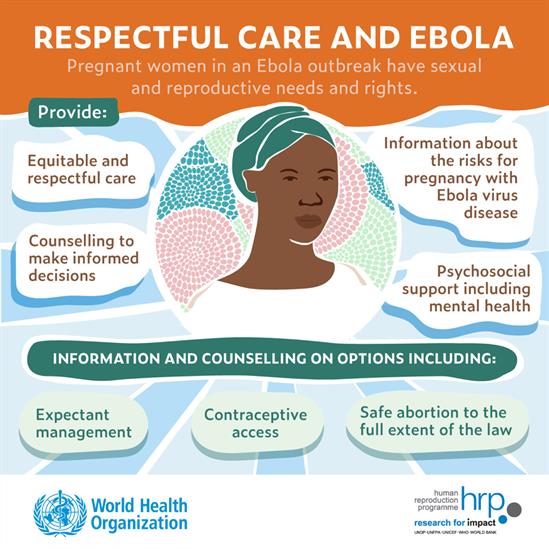Community representatives come to visit a family in the outskirts of Beni to raise awareness about Ebola.
Ebola virus disease
Ebola virus disease (EVD), formerly known as Ebola haemorrhagic fever, is a severe, often fatal illness affecting humans and other primates.
The virus is transmitted to people from wild animals (such as fruit bats, porcupines and non-human primates) and then spreads in the human population through direct contact with the blood, secretions, organs or other bodily fluids of infected people, and with surfaces and materials (e.g. bedding, clothing) contaminated with these fluids.
The average EVD case fatality rate is around 50%. Case fatality rates have varied from 25% to 90% in past outbreaks.
The first EVD outbreaks occurred in remote villages in Central Africa, near tropical rainforests. The 2014–2016 outbreak in West Africa was the largest and most complex Ebola outbreak since the virus was first discovered in 1976. There were more cases and deaths in this outbreak than all others combined. It also spread between countries, starting in Guinea then moving across land borders to Sierra Leone and Liberia.
It is thought that fruit bats of the Pteropodidae family are natural Ebola virus hosts.
The incubation period, that is, the time interval from infection with the virus to onset of symptoms, is from 2 to 21 days. A person infected with Ebola cannot spread the disease until they develop symptoms.
Symptoms of EVD can be sudden and include: fever, fatigue, muscle, pain, headache, and sore throat. This is followed by vomiting, diarrhea, rash, symptoms of impaired kidney and liver function, and in some cases internal and external bleeding (e.g. oozing from the gums, blood in the stools). Laboratory findings include low white blood cell and platelet counts and elevated liver enzymes.
It can be difficult to clinically distinguish EVD from other infectious diseases such as malaria, typhoid fever and meningitis. A range of diagnostic tests have been developed to confirm the presence of the virus.
There is no proven treatment for Ebola but simple interventions early on can significantly improve chances of survival. This includes rehydration with fluids and body salts (given orally or intravenously), and treatment of specific symptoms such as low blood pressure, vomiting, diarrhea and infections.
A range of potential treatments including blood products, immune therapies and drug therapies are currently being evaluated.
Hand hygiene is the most effective way to prevent the spread of the Ebola virus.
An experimental Ebola vaccine known as rVSV-ZEBOV proved highly protective against the deadly virus in a major trial in Guinea in 2015. It is being used in response to the current outbreak in the Democratic Republic of the Congo using a ring vaccination protocol.
During an outbreak, health partners apply a package of interventions including case management, surveillance, contact tracing, laboratory testing, safe burials and community engagement.
Working with communities to reduce risk factors for Ebola transmission is critical to controlling outbreaks.









